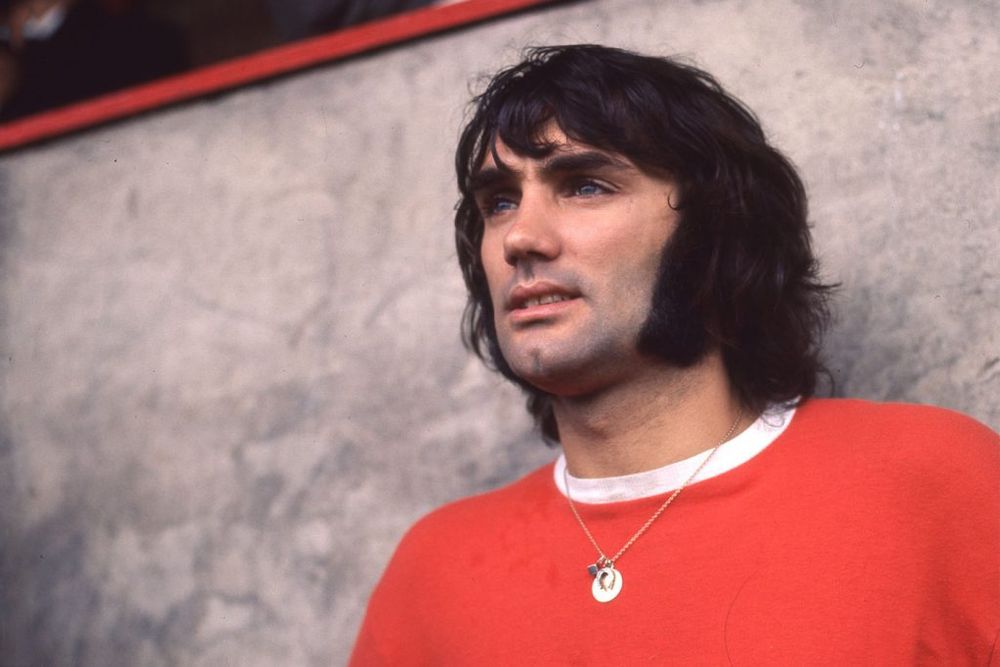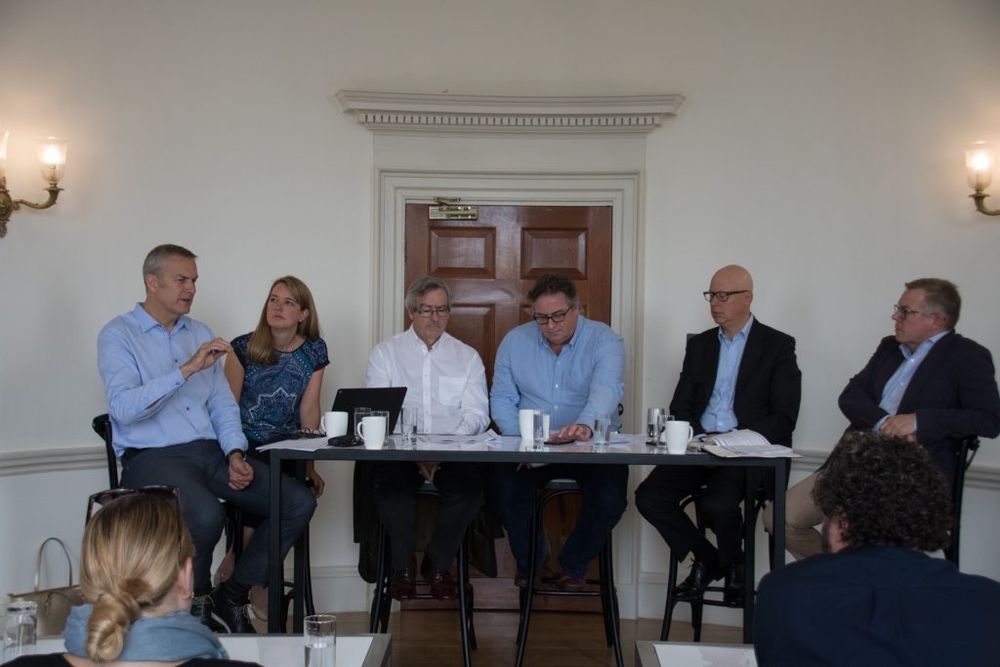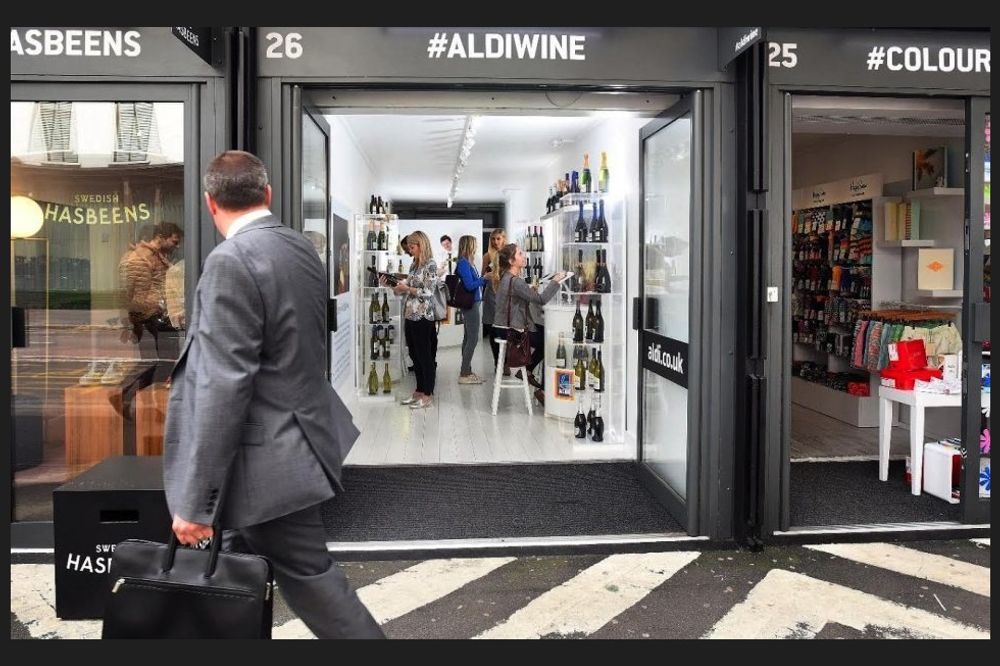If the UK is to continue to be one of Australia’s most important and strategic export markets then it has to find ways to move its price points up from entry and house wine level and really make a case for wine enthusiasts and trade buyers to get excited about its fine wines, says Richard Siddle in part one of his report from the recent Negociants UK Australia debate.

On the face of it George Best had it all…but being number one was not good in the long term
When talk in the trade turns to the so called problems the Australia wine category is facing, then it does remind you of the classic George Best tale from his pomp in the early 1970s.
You know the one about taking the then Miss World to a day at the races. On returning to a hotel they were counting out their winnings on the bed when they were disturbed by a room service waiter bringing the Champagne they had ordered. On seeing his football idol George Best lying on the bed with Miss World, surrounded by piles of cash, he politely asked: “George, where did it all go wrong?”
Now – if you can – consider the Australian wine category. It is still the biggest selling wine country in the UK, with a 24% volume and 23% market share, and has been number one for some years. So on the face of it everything appears fine and dandy.
But look closer at its trading performance in the UK and whilst sales of Australia’s off-trade wines below £5 are down 13.9% in volume and 14.9% in value they still represent 30% of its total volumes and 24% of its UK value. Factor in its wines below £7 then you are looking at 96% of all Australian wines selling in retail by volume and 93% by value (Source: IRI 52 weeks to August 31, 2017).
When you consider it is widely accepted that it is largely unprofitable to be selling wine much below £5, with duty levels now accounting for £2.60, then you can see why the George Best room service analogy is so apt.
Tough at the top
But it is, as we know, tough at the top and the very fact Australia is the number one wine retail category means it is also going to be first in line to be hit with whatever sales and promotional strategy any of the big supermarkets and discounters want to implement.
Ironically being number one means you are in less control of your trading strategy than less performing countries as everyone in the mass market wants a piece of your pie.
That said all the price points above £7, and particularly above £10 and £15 are all doing very well, albeit from lower base. Wines between £7 to £10 are up 20.4% by volume and 23.7% by value, for a 7% market share, but go above £10 and Australia is seeing 44.6% volume and 43% value growth up to £15 and then 119.6% volume and 91.6% value rise above £15 (Source: IRI 52 weeks to August 31, 2017). But then above £10 we are talking about 1% of total retail sales, so perhaps we should put that George Best Champagne on ice for now.
Up for debate

The Negociants UK debate, from left to right: Neil Bruce, Fuller’s, Lulie Halstead, Wine Intelligence, Brian Walsh, Wine Australia, The Buyer’s Richard Siddle, Dan Jago, Berrry Bros & Rudd and Negociants UK’s Simon Thorpe MW
This was the backdrop against which leading trade figures came together recently to analyse the strengths, weaknesses, threats and opportunities facing Australian wine at last month’s Negociants UK tasting.
Quite a panel it was too led by Negociants UK’s managing director, Simon Thorpe MW, Berry Bros & Rudd’s chief executive, Dan Jago, Brian Walsh, chairman of Wine Australia, Neil Bruce, head of wine at the brewers and pub chain, Fuller’s, Lulie Halstead, chief executive of consumer insights business, Wine Intelligence and chaired by The Buyer’s Richard Siddle.
The main focus of the debate was largely around how Australia was going to be able to wrestle more control over its own future and, in particular, push up average selling price points well above the £5 to £7 area where virtually all its retail sales currently lie.
The future, stressed Dan Jago, has to be in pushing and promoting premium Australia. It was not just a reflection of the quality of Australian wines, but an economic necessity.
He explained: “Australia personifies the challenge facing the industry where we are seeing total polarisation. At one end you have alcohol beverage made from grape, and at the other end you have fine wine which is very much about people, place, provenance and history. All the things that go together to create a story.”
Falling in to “no man’s land”

Australia is in danger of falling in to “no man’s land” warned Dan Jago
Interestingly, Jago said Australia was particularly badly placed to suffer from what he termed the “no man’s land” that has been created in the middle of these two polar markets. “It’s the bit in the middle that is having a really schizophrenic moment right now,” he explained.
“When we lost the ability to do high low promotions, when we removed an aggressively promotional agenda for an every day low pricing agenda there’s suddenly this big hole, where a lot of people sat in this mid-ground.”
Australia, he argued, is particularly susceptible to stepping in to this no man’s land. “Australia has naturally gravitated in to which ever void was available over the last 10 to 15 years, mainly driven by a pursuit for growth and that is not always the best thing to do,” said Jago. “It is going to become much more difficult than it has ever been over the next five to 10 years”.
But it is a challenge Wine Australia and its producers and winemakers are well aware of, stressed Walsh. He said the body had taken the view two years ago that there were essentially two growth sectors in mature wine markets: fine wine; and the branded and commodity sector, which in the UK would be up around £5 to £6.

Australia is very aware of its need to push up price points to more profitable levels, said Wine Australia’s Brian Walsh
He agreed it made complete sense for it to concentrate its market development budget on trying to develop that fine wine sector. He admitted that might even end up being a “multi-generational” ambition, but it had to do all it can “to raise awareness of Australia’s winemaking capability”.
That fine wine definition could also be a wine priced at anything from £10 to £100 plus depending on an individual consumer’s perception of what a fine wine is, stressed Walsh. “We are putting all our effort in to that area. We are not sure yet if that then creates a trickle down effect, but if we can grow from that small base in the higher price points then the whole average price point for Australia comes up and we can move away from the research that shows that we are as regarded as making very good value wine, but not special occasion wine,” he explained.
Make sense to lose market share?
For Negociant’s Simon Thorpe MW that throws up an interesting scenario for Australia in the UK. Its long term ambition might quite rightly be to concentrate on the £10 plus category, but to really make a marked shift does it need to sacrifice some of its volume and value market share.
“If you take that long term view then does Australia not need to exit or be less reliant on the mainstream section of the UK industry?” asked Thorpe.

It would surely make sense for Australia to have less market share if each percentage share offered more profitability, said Negociants’ Simon Thorpe MW
Walsh said that would ultimately be “a decision for the major brand owners” but it was certainly an area for discussion. “If you took a dispassionate view then the market share we hold in the UK is scaringly high by volume. If we had 15% market share in six major markets around the world, then we would be a very strong position, rather than have 24% in this market and only 7% and 6% in other countries.
Thorpe added: “It might be more attractive to have 15% here if each of those percentage points could deliver more profit for Australia.”
That’s certainly the rub, agreed Walsh. “If we can replace the volume with value and just slowly that change dynamic and everyone is making money rather than maybe treading water with profits and prosperity we would be in a much stronger position.”
Ultimately, said Walsh, Wine Australia’s ambition was to “aspire to be at or our near the highest bottle price point of our major competitors in key markets”. Which, he stressed, it was already achieving in many areas of the world, and remains a (very) long term commitment for the UK.
“In many markets we are very close, and that is a great position to be in. We are the fifth largest wine exporter in the world and if we can be one or two in most of our markets then we would be over the moon.”
He added: “We think we can do nicely in the £10 to £15 price spot in the UK because we don’t have a lot of problem selling those kind of wines.But we know it’s a very small base.”

Fuller’s Neil Bruce believes Australia has to recapture what he calls the “co-opetition” between wine producers that made the image of its wines so dynamic in the past
To do so Neil Bruce at Fuller’s believes Australia needs to go back to the “co-opetition” it used to do so well, where the trade was united in what it believes in. Where there was a sense they were all in it together, striving to tell the same story, push the same message, and bat for brand Australia. That in itself gave the Australian wine category an energy that few other countries could match. It’s something it potentially has far more naturally than a lot of classic Old World countries like France.
Supply and demand changes
Walsh also pointed out that the simple economics of supply and demand will have an increasing impact on average prices for Australia in markets like the UK. The fact the country had been in over production for the last 10 days has meant there has always been grapes “accessible to buyers at below cost of production”.
“But that dynamic is changing quite dramatically,” he stressed. “We’ve had price increases, even in the warmer regions, in the last two years of some significance and we’ve had some of the bigger players saying we can’t pay any more for grapes and achieve those price points any more.”
The big difference now is that global demand for its wines, particularly for China, means that “slack is being taken up”. “Sales to China have taken pressure off inventories,” he added.
The big test will come when it does not have the bumper harvests it has enjoyed over the last three years, but he is hopeful “natural forces” will also play their part in seeing the base level for Australian wines move up.
If that was the case then it was quite possible for those Australian regions currently growing grapes just to hit price points, could be adapted to make higher quality wines.
“If that’s the case,” added Thorpe, “10 years hence we could be having a very different discussion to what we are now.”
Further polarisation

Aldi and Lidl between them have shaken up not only the wine category but what margins retailers are happy to take, said Jago
The debate widened to look more closely at Jago’s “total polarisation” hypothesis of the UK wine market. He could only see that divide getting even bigger between “those parts of the market that become even more focused about their history, their origins – the kind of wines we sell now (at Berry’s). Versus the likes of the German discounters who are trading up in a very determined way at a price that is effective for their customers in drawing them away from other retailers”.
The issue for the major grocers in competing with those German discounters is about what they consider to be an “acceptable level of retail margin” rather than “what it costs to produce a bottle of wine,” argued Jago. “That is always going to continue to be the fight at the bottom end of the retail market.”
The challenge for Australia, he claimed, was in determining where they sit in that key £5 to £10 area, where all the growth is coming from. What added value propositions are they really offering to consumers to get them to trade up? “What’s its raison d’ȇtre?” he asked.
You only have to look, he added, at the huge rise in Prosecco to see how consumers will spend more if they understand why this particular bottle of wine is offering me added value and “does it do for me the thing I what it to do”. “Prosecco does a brilliant job of being exactly what people want it to be: it’s sweet, it’s fizzy and it’s not too expensive. What’s not like to like about it,” said Jago.
Look at Sauvignon Blanc. New Zealand is, in a way, delivering a Prosecco proposition for New Zealand Sauvignon Blanc, claimed Jago. “It’s nice, not too dry, full of flavour and easy to understand.”
Or as Thorpe put it offering a “Big Mac” of consistency every time someone picks up a bottle.
And finally

Australia needs to get the right influencers and experts talking about the exciting potential it has, said Wine Intelligence’s Lulie Halstead
Lulie Halstead argued it was time Australia really simplified what it stands for. “So from a region point of view, focusing in on one message per region as a starting point to build on and for consumers to understand.”
She also said it was important for Australia to find the right experts and influencers to fly its flag. “The ones being listened to by which consumers they want to talk to,” she added. Be they individuals, retailers or operators.
For Jago Australia’s immediate challenge is to: “Really focus on having a unique rather than generic proposition. It needs to become a nation of individual, esoteric, diverse and hand crafted producers. There is always going to be place for volumetric production, but psychologically Australia has to work to separate the two out so they are not just lumped in the same basket in the eye of the consumer, and that is going to take a long time.”
The final words fall to Walsh at Wine Australia who left the debate with an upbeat tone. “We are confident we have the geographies, the producers, the terroir, the people, the energy to take Australia forward. There is so much excitement about what is happening in Australia and I am very confident we have long term positive future here.”
- Part Two: In Part Two of our analysis of the Negociants UK debate to be published later this week we will look at Australia’s position in the on-trade, what it needs to do to improve its fine wine credentials, and how does it redefine the category as a whole by addressing issues such as pricing and image.








































